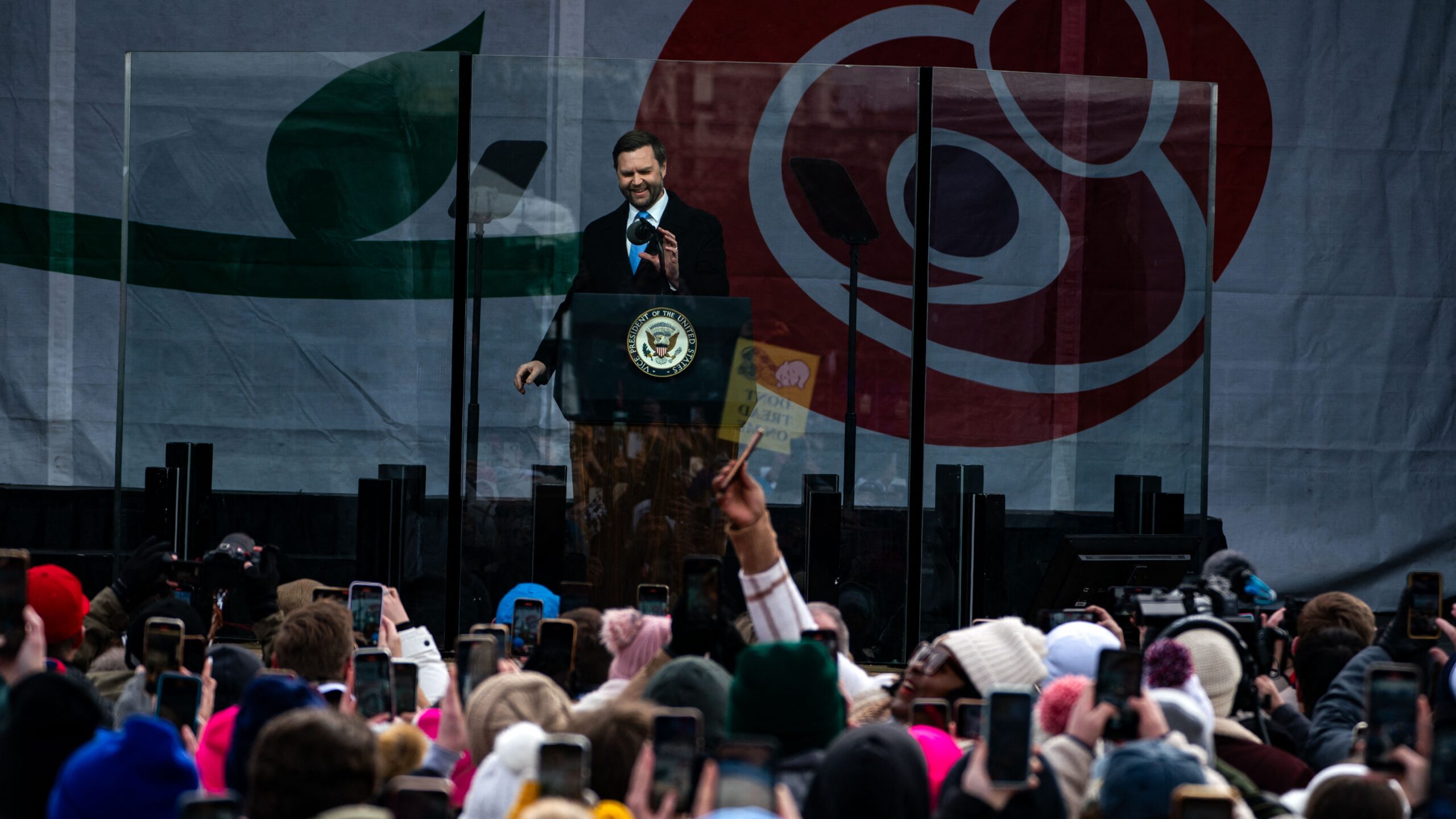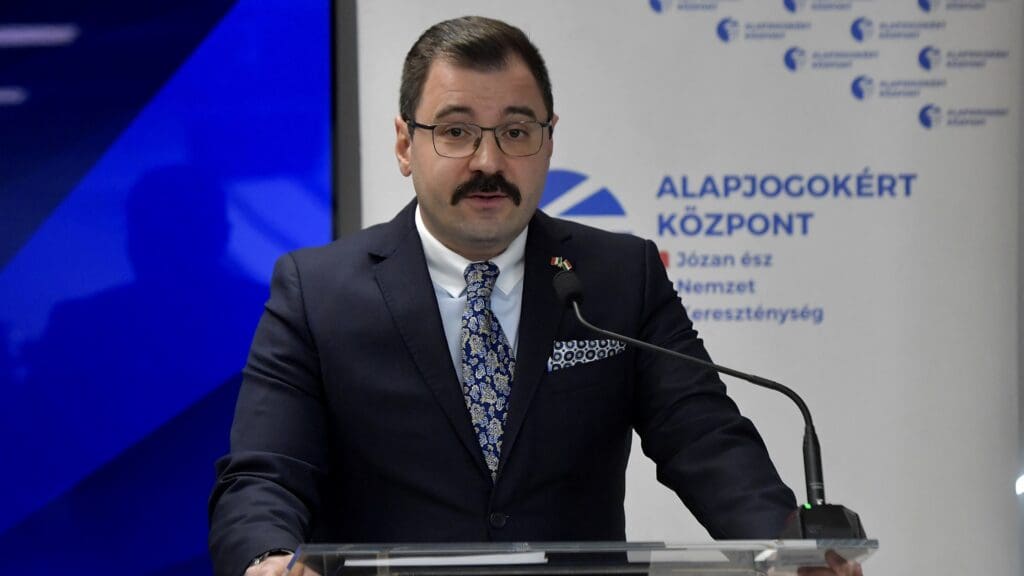24 January 2025 was a frigid Friday in Washington, DC. But freezing temperatures didn’t deter a smiling JD Vance from making his first public appearance as the 50th vice president of the United States of America at the 52nd annual March for Life. Vance chose his moment and his message perfectly. He outlined a much-needed playbook for the pro-life movement post-Roe: making America pro-life by making America pro-family.
This was not the first time top political brass from 1600 Pennsylvania Ave supported the pro-life movement. While in office, President Ronald Reagan wrote an essay criticizing abortion titled Abortion and the Conscience of the Nation. President George W Bush delivered remarks to the March for Life from the White House in January 2008. And during his first term, on 24 January 2020, President Donald Trump addressed the March for Life from the center stage on the National Mall. I was at that March for Life, and the energy on the ground was electric. President Trump bears the distinguished honor of being the first President to brave the cold and speak in person, and he will always have my gratitude for joining us that day.
But this year marked a turning point. Vance’s message was perfect for the moment that the pro-life movement is navigating in the brave new post-Roe world.
As has been written elsewhere, the pro-life movement finds itself at a crossroads. Roe was successfully overturned in 2022, but the results of that legal victory have truthfully been mixed. Many states responded to the new status quo by enshrining abortion protections in their constitutions, frequently with the effect that the unborn have fewer protections in those states now than they did under Roe. Florida was one of just three states to defeat a pro-abortion ballot initiative in 2024. By contrast, pro-life ballot initiatives have failed in over a dozen other states since 2022. Abortion by mail has become big business. Medication abortion now accounts for almost two-thirds of the abortions committed nationwide. That figure doesn’t count those cases where abortion pills are obtained from unlicensed medical practitioners or smuggled across state lines. And overall, abortion seems to be on the rise.
‘Roe was successfully overturned in 2022, but the results of that legal victory have truthfully been mixed’
Ever since Dobbs, signs of trouble have been brewing inside the Republican Party too. The shifting legal landscape has made the pro-life position a much more convoluted political question. Traditionalist accounts of sexual and social ethics, libertarian sensibilities, and free market absolutism were and still are uneasy allies. Many allegedly pro-life politicians managed to hide their ambivalence about abortion behind the language of federalism, quipping that the problem with Roe was judicial overreach, not the unjust killing of the unborn. And ultimately Dobbs itself was decided along federalist lines so the decision wasn’t quite the vindication that many pro-lifers prayed it would be.
Happily, the new administration has decisively taken up the pro-life cause. Upon taking office, President Trump immediately reinstated the Mexico City Policy to disallow funding abortion overseas with taxpayer money, and he rescinded two executive actions that President Biden had used to funnel federal money to abortion. He also pardoned the 23 pro-lifers who were jailed for FACE Act violations during President Joe Biden’s tenure in the White House. But the administration’s work is just beginning.
This complex backdrop is what made Vance’s message at the March for Life so timely. 50 years of legal abortion is a long time: long enough for many people to have lived their entire lives under the old abortion regime. They’ve been taught to fear pregnancy and to view childrearing as a career ending nightmare to be avoided at all costs. To them, the pro-life cause evokes religious overreach. Abortion restrictions code as repressive and patriarchal. And the in-fighting and legal strategizing on the pro-life side of the aisle can be off-putting for outsiders who believe that abortion is necessary healthcare for women in need.
Americans need a new vision. They need to see what the pro-life movement has been offering all along, but with new emphasis. As Vance demonstrates, the playbook for really moving past Roe is reintroducing young people to the beauty—and feasibility—of getting married, raising children, and deriving comfort and pride from family life.
In his speech, Vance emphasized that the government has a role to play in forming culture. Although many individuals, especially in the pro-life movement, have devoted themselves to supporting young people, especially those facing crisis pregnancies, ‘our society, our country…and our government…failed a generation not only by permitting a culture of abortion on demand, but also by neglecting to help young parents achieve the ingredients they need to [live] a happy and meaningful life.’
‘Implementing comprehensive family policy is part of the mandate that sent Trump back to Washington’
Vance said that the government should ‘make it easier for young moms and dads to afford to have kids, to bring them into the world, and to welcome them as the blessings that we know they are.’ In practical terms, that means making it ‘easier to find a good job, easier to build a home to raise that family in, easier to save up and purchase a good stroller, [and] a crib for a nursery.’ It also means doing more of what Trump started in his first term—like doubling the child tax credit as he did in 2017.
Practicality like this is excellent. It connects the pro-life cause with the problems that many young people in America are facing. Inflation has been difficult for families, and financial concerns impact the decision to have children. For Americans to do so, they need to ‘feel that they can raise thriving and healthy families,’ and that means economic stability and moral support.
Beyond that, there’s a narrative shift that Vance offers that’s tied to the mandate that sent Trump back to Washington this past November. Many Americans are tired of radical individualism—a concept Vance referred to in his speech. Americans want to know their neighbors. They want to live in safe neighborhoods with good jobs that pay well, and they want to live happy and healthy lives. But all too often—given the breakdown in social structures, family units, and religious communities—young people don’t know where to begin. Many were raised in homes broken by divorce. They have no model for healthy and happy family life. They don’t know what many in the pro-life movement know: that ‘the responsibilities and joys of family life’ are not ‘obstacles to overcome’ but instead are blessings and a source of profound meaning and ‘personal fulfillment’.
Vance lends personal credibility to the new pro-life framing that he’s offering because he isn’t preaching from an ivory tower at pregnant women in dire straits. As he emphasized during his vice-presidential debate last fall, one of his dear friends had an abortion. And he is no stranger to fatherhood and family life. He and his wife have three small children, so they know ‘firsthand the indescribable beauty of new life’ along with the attendant challenges of raising three small kids.
Best of all, Vance’s approach has a successful precedent: Hungary. Starting in 2010, Hungary implemented a panoply of regulations to make it more affordable for young couples to get married and to have children. Those measures include housing and child-care support, parental leave, family tax benefits, family building loans, and family-friendly work policies to support parents that are having children. This battery of policies has borne remarkable fruit, including on abortion. In 2010 there were 40,499 abortions in Hungary. By 2022 the number had fallen to 21,779—a decline of nearly half in just twelve years. The United States can draw on Hungary and the lessons learned to craft a pro-family package that will deliver for American families. As Vance said, every child is a blessing. That’s been the message of the pro-life movement from its inception, but after 50 years of legalized abortion and the fall of Roe, the pro-life movement in America is facing new challenges. Implementing comprehensive family policy is part of the mandate that sent Trump back to Washington because it’s part of the vision of America that so many people voted for: a new beginning and a chance for a happy, healthy family life. With Vance’s vision of a pro-family America, more Americans will get the practical help they need to know the joys of family life. God willing, America will get the chance to be the pro-life country it was always meant to be, and Roe will really be behind us.
Related articles:








